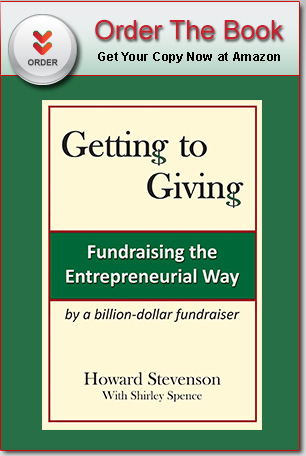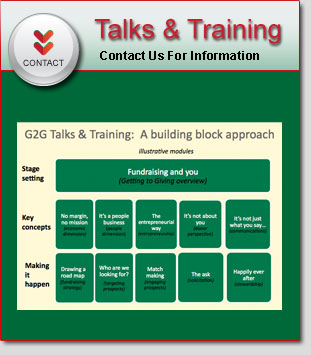1. How can you avoid leaving too much money on the table by letting the donor decide the amount?
The first question is: “Is this a long-term game or a short-term game?” For most of the things I’m involved with, I think of it as a long-term thing, even if it’s a capital campaign. Donors usually get more than one opportunity to make a “once in a lifetime” gift. You may get less this time, and more next time.
Second, I don’t like putting people on the spot; it’s not a good way to build a relationship. It’s more like putting a gun to someone’s head and saying: “Empty your right hand wallet, now that I have the left hand one.” You want to be able to go back to people.
If you know the person well, you can use humor. You might be able to say “I was hoping for more” or “Can I come back next year?” or even “I didn’t know you were in such dire financial straits.” You have to be very careful, though.
The fact is, you might be short changing yourself by asking for less than the person is able and willing to give. I have had the happy experience of working with someone who was rated as a $1 million prospect, and ultimately gave $25 million.
It also relates to my philosophy regarding philanthropy. I figure that it’s their money until they decide to give it away. Not pressuring them for a specific sum acknowledges that, and shows respect.
2. Development managers say don’t list donors by name because they’re afraid of poaching. I say publish rather than hide. Who’s right?
You are. Publish. If the nonprofit you’re working with thinks it’s a competition, that’s a problem. It’s not a fight to get 100%, or be #1 on a donor’s list. Being number 2 or 3 or 4 is just fine. It’s a good sign if your prospect is already giving to a “competitor,” because they’re more likely to give to organizations with a similar purpose. People who support the Red Cross are likely to be attracted to Partners in Health, too. A Nature Conservancy supporter will be interested in World Wildlife.
3. How can I not come across as a salesperson?
Well, the fact of the matter is that you are a salesperson, but it’s about consultative selling. You’re not selling Fuller brushes, or used cars. You’re not trying to exploit people, or sell something that you don’t believe in. Jokes about “performing cashectomies” aside, your goal is to find like-minded people, and make a match between what your organization aspires to accomplish, and their philanthropic goals. That, by the way, requires as much – if not more – listening than talking. As my grandmother used to say: “God gave you two ears and one mouth for a reason.”



